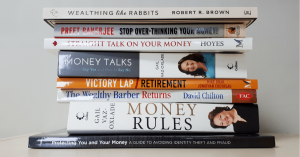I am dedicated to pursue financial independence, by saving most of my paycheques and investing in income-generating assets. But there are so many different ways to invest, why did I specifically choose Dividend Growth Investing (DGI)?
There’s quite a few good reasons, let me explain in details.
I never have to sell
One of the great things about DGI is that I never have to sell any of my stocks to realize a profit. By buying shares of a company, I become a partial owner of the business. In return, they will regularly send me a cash paycheque in the form of a dividend. Why would I sell my stocks when they keep sending me money?
I don’t worry about the share prices or market timing
Since I don’t plan to sell, I don’t really care about the share prices of my stocks. This also means I never have to worry about timing the market. All I have to do is buy dividend growth stocks at attractive prices, hold them forever, and collect the dividends.
On the contrary, if I don’t choose DGI, I will eventually have to sell my stocks to make a profit. Well how do I know when to sell a stock for profits? Market timing is no easy task. I cannot predict stock price movements correctly and consistently. For all I know, tomorrow’s stock prices can go up, down, or sideways. What happens if I need to sell my stocks for cash to cover my expenses, but suddenly the market collapses? Do I sell my stocks and take heavy losses? Thinking about that is already stressing me out. Well thankfully I don’t have to think about it, because I am a dividend growth investor. I just simply hold the shares, and those cash dividends will keep coming my way.

Dividends are predictable
Dividend growth investing is very consistent. Right now, I know exactly how much dividend income I will generate over the next 12 months. I cannot say the same about my companies’ stock prices though, which fluctuate every day. The stock market might even crash tomorrow, and my shares can significantly decline in price. But even if that were to happen, I know my companies will continue to make dividend payments. Sometimes the stock price can be irrelevant to the underlying business performance.
Let’s say a market crash actually happens tomorrow, and the Coca-Cola Company’s shares drop 25%. Now the sky is falling, right? But wait! Around the world, people continue to drink Coca-Cola beverages, regardless of stock prices. This company is still going to sell 1.9 BILLION beverage servings each day, they will still earn the same amount of money, and so they will still send me the same amount of dividends.
Dividends will grow
The amount of dividends I receive will increase year over year, which is why this strategy is called Dividend Growth Investing. The growth comes from profitable businesses growing earnings over time. As a result, they reward their shareholders with increasing amounts of dividends every year.
Johnson & Johnson, for example, has raised their dividends for 53 consecutive years! On top of that, the amount being increased is significant, with a 10 year average rate of 9.7%. The yield on JNJ stock is at 3% today. If they are able to increase their dividends at the same rate, in 10 years you will be receiving a 6.9% dividend on the amount you invested. In 20 years that will be an astounding 17.4% in dividends per year. Not only will this cover inflation, but over time will increase your wealth dramatically.
Long streaks of dividend increases are not uncommon either. I follow the Dividend Champions list compiled by David Fish. It is a list of companies that have increased dividends consecutively for 25 or more years. There are currently 106 such companies on the American stock exchange.
Peace of mind
Most dividend growth stocks are blue-chip companies that consistently earn large profits. The profits are so large that they share the excess cash with their shareholders in the form of dividends. Investing in strong businesses like these gives me peace of mind. I don’t need to be glued to my computer screen and monitor the stocks day in day out. I usually read their reports once a quarter to see how they’re doing, but generally these businesses will take care of themselves. I just need to do nothing, and collect the dividends.
The Bank of Nova Scotia, one of the large Canadian banks in my portfolio, has paid a dividend every single year since 1832. That is a whopping total of 183 years. When a business can maintain its dividend through two world wars, the depression, multiple stock market crashes, and most recently the financial crisis, I feel pretty good that they will continue to pay dividends in the foreseeable future.
Well, that’s all I can think of for now. Hopefully that provided some clear details on why I think DGI is a great investing strategy. Now I just need to stick to it no matter what, and collect the dividends along the way!
Please leave any comments or questions below.
Thanks for reading!



